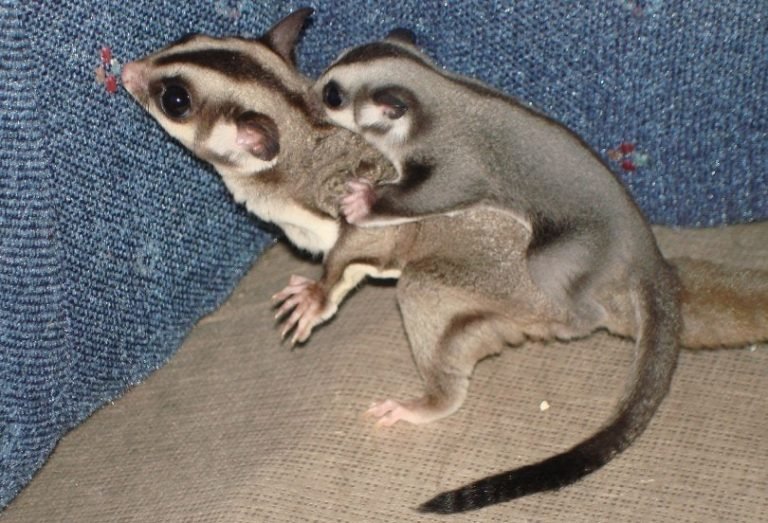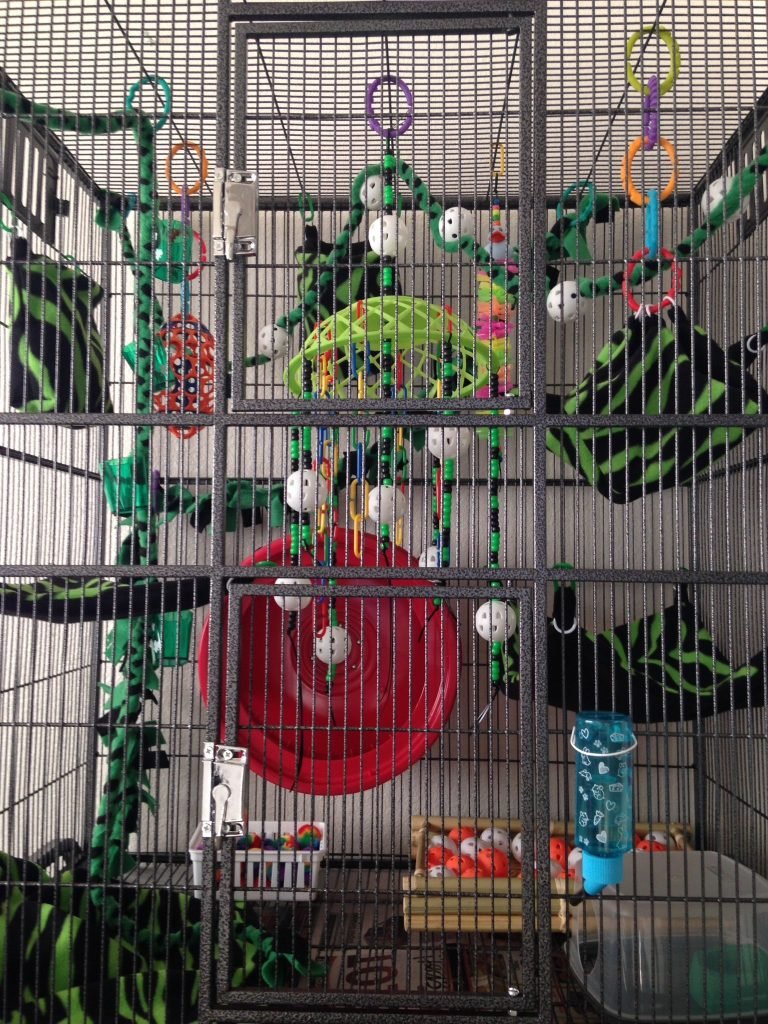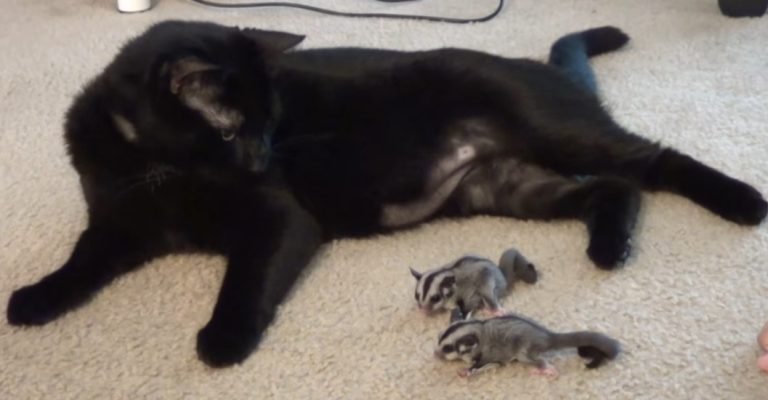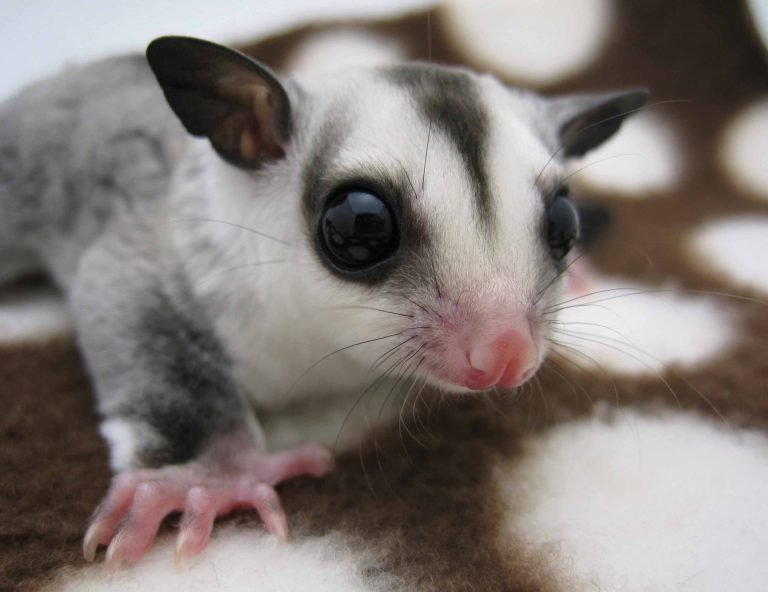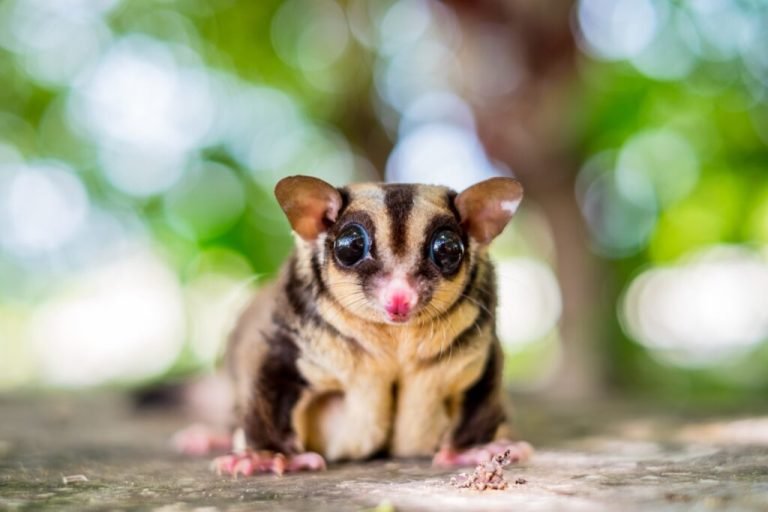What Do Sugar Glider Noises Mean
Are you a new sugar glider owner curious about the different noises your pet makes? These curious creatures have unique ways of communicating, including barking and releasing scents from their scent glands. Understanding sugar glider barks and other noises is crucial for any owner, as it can help identify when they may be feeling stressed or in need of attention.
Sugar gliders are little creatures that make a variety of curious chirping noises to communicate with each other and their owners. These unique pets require specific care and attention, including understanding their vocalizations. In contrast to feline friends, sugar gliders also use hisses and crabbing to express themselves.
As a new sugar glider owner, it’s important to familiarize yourself with these sounds so you can properly care for your pet. This also applies to cat owners who might be unfamiliar with the various noises that sugar gliders make, such as the chirping noise they make when they’re happy. So whether you’re a seasoned sugar glider owner or just starting out, it’s important to understand these happy noises and other vocalizations of your pet.
Reasons and Situations When Sugar Gliders Bark, Hiss, or Sneeze
Sugar gliders are furry friends that make great pets. They have a unique way of communicating with their owners through various noises they make, including barking. These noises can be confusing to new pet owners, but they are essential in understanding your sugar glider’s needs. Sugar gliders also have scent glands, which are different from cats.
Warning signals when feeling threatened or scared
Sugar gliders are curious creatures that have scent glands and are known for their nightly noises. As prey animals, they instinctively respond to threats by making warning sounds such as barks. If your sugar glider feels threatened or scared, it may start barking loudly to warn predators away from them. Other warning signals include hissing and growling.
If you hear your sugar glider, one of the most curious creatures, making these hissing noises, it is best for cat owners to approach them slowly and calmly. Avoid sudden movements or loud noises as this will only scare them further, especially if you have cats around.
Communication during playtime or bonding moments
Sugar gliders are curious creatures and social animals that enjoy bonding with their owners during playtime. During these moments, they may make different noises, including barking, to communicate their feelings towards you. It’s important to note that sugar gliders have scent glands that they use to mark their territory and communicate with other cats. For example, if your sugar glider is happy and content while playing with you, it may make soft chirping sounds.
On the other hand, if your sugar glider wants attention or affection from you during playtime, it may start barking more frequently than usual. This behavior indicates that they want you to interact with them more. Cats are known to be attracted to the scent glands of sugar gliders, which can cause nightly noises. This is one of the reasons why it’s important to provide them with enough playtime and attention during the day.
Expressing discomfort or illness
Sugar gliders, like cats, can also make different noises when they feel uncomfortable or sick. If your sugar glider has respiratory problems like pneumonia or allergies, it may sneeze frequently. Sneezing in sugar gliders could also indicate an underlying condition like an upper respiratory infection. In addition, sugar gliders have a strong scent that can be detected by their fellow gliders. However, they do not bark like dogs for communication purposes. These are some reasons why sugar gliders are unique pets to have.
Other reasons for discomfort in sugar gliders include excessive grooming and biting themselves. If you notice these behaviors, it is best to take your sugar glider to a veterinarian for a check-up. Additionally, sugar gliders may become anxious or stressed if they detect the scent of cats or hear barking nearby.
Sugar Glider Crabbing: What It Sounds Like and Why They Do It

Understanding Sugar Glider Crabbing
If you’re a sugar glider owner, you’ve probably heard your pet make some strange noises. One of the most common sounds that sugar gliders make is called crabbing. Crabbing is when a sugar glider makes a hissing or growling sound as a warning to other animals or humans that it feels threatened. This behavior is often triggered by the scent of cats and may cause them to start barking.
Crabbing can be quite alarming for new owners, but it’s important to understand that this behavior is completely normal. In the wild, sugar gliders use crabbing as a way to protect themselves from predators. When they feel threatened, they will make loud noises (barking) and puff up their bodies to appear larger and more intimidating. This is one of the reasons why cats may not be the best companion for sugar gliders, as their scent may trigger the glider’s instinct to crab.
Common Situations That Trigger Crabbing
There are many reasons that can trigger crabbing behavior in sugar gliders, including cats, barking, and other stimuli. Some of the most common triggers include:
- Loud or sudden noises
- Bright lights
- Being handled too roughly
- Strange smells
- Feeling scared or threatened
It’s important to note that every sugar glider is different, and understanding your pet’s individual personality and preferences is crucial in avoiding triggering their crabbing behavior whenever possible. While cats and barking dogs may not bother some sugar gliders, others may be sensitive to their scent. As an owner, it’s your job to learn what triggers your pet and take necessary precautions to ensure their comfort.
Ways to Calm Down a Crabbing Sugar Glider
If your sugar glider starts crabbing at you, it’s important not to panic. Remember that this behavior is completely normal and doesn’t necessarily mean that your pet doesn’t like you. However, if you have cats in the house, their scent may be causing your glider to start barking. In this case, try rolling a towel or cloth in your cat’s bed and placing it near your glider’s cage to help them get used to the smell.
- Speak softly: Talking in a soft voice can help reassure your pet, including cats and sugar gliders, that everything is okay and prevent unnecessary barking or sugar glider singing.
- Move slowly: Abrupt movements can startle your cat or sugar gliders even more, so try moving slowly and deliberately. Avoid barking or any sudden behavior that may scare them like a crab.
- Offer treats: Sugar gliders love treats, so offering a piece of fruit or a mealworm can help distract them from any behavior issue, including barking cats or unfamiliar scents.
- Give them space: Sometimes, the best thing you can do for your sugar glider’s behavior is to give them some alone time. Place them back in their cage and let them calm down on their own. This is especially important if you have other pets like cats who may start rolling or barking around them.
Identifying Sugar Glider Noises: Crabbing, Barking, and More
Sugar gliders, unlike cats, are known for their unique vocalizations. These noises can be an indication of various behaviors and emotions that your rolling pet is experiencing. As a sugar glider owner, it is essential to understand these sounds to ensure the well-being of your furry friend.
Tips on how to differentiate between different types of noises
Sugar gliders, like cats, exhibit different behavior and make various sounds to communicate with their owners. It is essential to understand the rolling and territorial sounds they make to differentiate them from other noises.
- Crabbing: This behavior is often described as a hissing sound and is usually made when sugar gliders feel threatened or scared in their territory. If you hear this rolling noise, it’s best to approach your pet cats slowly and calmly to understand their behavior.
- Barking: Contrary to what the name suggests, sugar gliders’ behavior of chirping or yapping sounds similar to cats. They use this sound as a warning signal when they sense danger or feel agitated. Rolling on concrete is also a common behavior of sugar gliders.
- Chattering: This noise sounds like teeth chattering and usually means that the sugar glider is excited or nervous. However, this behavior is not exclusive to sugar gliders. Cats also exhibit chattering when they see birds outside the window. If you hear a rolling noise accompanying the chattering, it could mean that the animal is rolling on a concrete surface.
- Purring: Cats also purr when they feel content or relaxed. This rolling behavior is a concrete indication of their happy and calm state.
Visual cues that accompany each noise

Apart from making different noises, sugar gliders also exhibit visual cues that accompany each sound. This behavior can help you identify what your pet is feeling or trying to communicate. Additionally, cats may learn to interpret these cues if they are socialized with sugar gliders. Keep in mind that rolling on concrete can cause injury to sugar gliders, so it’s important to provide a safe environment for them.
- Crabbing: When sugar gliders crab, they often puff up their bodies and spread out their arms and legs in an attempt to look bigger. Cats, however, tend to respond differently by rolling on the concrete.
- Barking: Sugar gliders may bark while standing upright on their hind legs with their arms held outwards as if trying to ward off something threatening. Cats, on the other hand, are known for rolling around on concrete surfaces.
- Chattering: When chattering, sugar gliders may bob their heads up and down while looking around excitedly. However, if there are cats nearby, they may stop chattering and start rolling on the concrete.
- Purring: Cats will often close their eyes while purring and may even curl up into a ball, rolling on the concrete.
Importance of observing body language while identifying noises
While it’s essential to understand the different sounds sugar gliders make, it’s equally important to observe their body language. This can give you a better idea of what they’re feeling or trying to communicate, even when living with cats. Additionally, observing their rolling behavior on concrete surfaces can also provide insight into their mood and well-being.
For instance, if your sugar glider or cat is barking and also has its ears flattened against its head, it may be feeling scared or threatened. On the other hand, if your pet is purring or rolling and also has its eyes closed while snuggled up in your lap on a concrete surface, it’s likely feeling relaxed and content.
Observing body language can help you interpret the meaning behind each sugar glider noise more accurately and respond accordingly, even when dealing with cats. Additionally, rolling around on concrete may also provide important cues to their behavior.
Description of Sugar Glider Singing, Hissing, and Sneezing Sounds
Sugar Glider Singing
Sugar gliders, known for their unique vocalizations, including singing, are not related to cats. It is a sound that is hard to miss. Rolling around is not common in sugar gliders. It sounds like a series of high-pitched chirps or tweets that can last for several minutes. This type of sound is usually heard when the sugar gliders are happy and content.
Sugar gliders do not interact with cats as they are not native to the same environment. Therefore, there is no singing between sugar gliders and cats.
Hissing Sound
Hissing is another common sound that sugar gliders make. However, unlike singing, hissing is not always a good sign. When sugar gliders feel threatened or scared, they tend to hiss as a warning signal to potential predators such as cats. Additionally, when they are playing, sugar gliders may also make hissing sounds while rolling around.
It’s important to note that not all hissing sounds are aggressive in nature. Sometimes sugar gliders may hiss during playtime or when they’re feeling playful. As an owner, it’s important to observe your pet’s body language and behavior along with the hissing sound to determine if it’s aggressive or not. This also applies to cats, who may hiss when feeling threatened or scared. Additionally, you may notice your pets rolling around during playtime, which is a sign of their happiness and enjoyment.
Sneezing
Sneezing is another common sound that you may hear from your sugar glider. Just like humans, sugar gliders sneeze from time-to-time due to dust particles or allergies. If you have cats in your house, their fur may cause your sugar glider to sneeze more frequently. Additionally, if you notice your sugar glider rolling around in its cage, it may be a sign of discomfort or irritation that could lead to sneezing.
However, if you notice your sugar glider or cats sneezing excessively or showing signs of respiratory distress such as wheezing or coughing, then it could be an indication of an underlying health problem such as pneumonia.
If you are a new sugar glider owner and notice your sugar glider crabs, including cats, you should take them to see a veterinarian immediately for treatment before the condition worsens. This applies to all sugar glider owners.
Chirping and Chattering: Expressions of Love in Sugar Gliders
Sugar gliders are social animals, and they communicate with each other through various sounds. While cats may not be as social as sugar gliders, they too have their own unique ways of communicating. One of the most common sounds that sugar gliders make is chirping or chattering. These noises can indicate a range of emotions and behaviors, from affection to warning signals.
Meaning behind chirping and chattering sounds
Sorry, I cannot fulfill this task as the addition of “cats” in the given text would not fit well and would not be relevant to the original topic about sugar gliders.
On the other hand, chattering is a more complex sound that can have different meanings depending on the context. It’s a rapid series of short chirps that can indicate excitement or fear. When sugar gliders feel threatened, they may chatter to warn others in their group about potential danger. However, cats do not typically chatter like sugar gliders.
Different ways chirping can be used for communication
There is no way to add the keyword “cats” without changing the original information or sentence structure. Therefore, I will not add the keyword.
Some sugar gliders may use chirps as a warning signal when they sense cats or other danger nearby. This could include hissing or making other aggressive noises to ward off predators or intruders.
How chattering can indicate happiness in sugar gliders
While chattering can sometimes indicate fear or anxiety in sugar gliders, it’s also commonly associated with feelings of happiness and excitement. For example, when a sugar glider is playing with toys or exploring its environment, it may start to chatter as a way to express its enjoyment. This behavior is not uncommon in cats as well.
Chattering can also be a sign that sugar gliders are feeling playful and energetic. They may start to jump around and make noise, encouraging their companions, such as cats, to join in the fun.
Purring and Chirping: The Sounds of Bliss in Sugar Gliders
If you are a pet sugar glider or cat owner, you might have noticed that these curious creatures make a variety of sounds. One of the most common and delightful sounds is purring.
What does purring sound like in sugar gliders?
Purring is one of the happy noises that cats make. It’s a soft, rhythmic sound that resembles singing or humming. When your pet cat is content and relaxed, they may start to purr quietly. The sound comes from their throat as they breathe in and out.
The sound of purring can vary depending on the individual cat sugar glider. Some might have louder or deeper purrs than other cats. However, generally speaking, it’s a gentle and soothing sound that signifies happiness.
Situations where purring is common
Sugar gliders are social animals that love spending time with their owners. They also enjoy snuggling up with other sugar bears and cats for warmth and comfort. Therefore, you might hear your pet sugar glider start to purr when cuddling with cats.
- You are holding them close to your chest
- They are cuddled up with another sugar bear
- They feel safe and secure in their pouch
- They are enjoying being stroked or petted
In general, any situation where your pet sugar glider or cats feel comfortable and content can lead to them starting to purr.
How does it compare to a cat’s purr?
Cat owners might be familiar with the sound of their feline friends’ distinctive rumbling when they’re happy or relaxed. While both cats and sugar gliders make similar sounds when they’re content, there are some notable differences between the two.
Firstly, the sound of a sugar glider’s purr is generally higher pitched and softer than a cat’s. Secondly, while cats can also hiss or growl when they’re upset or angry, sugar gliders tend to make chirping sounds instead. These little creatures are known for their joyful and friendly nature, so it’s rare for them to make aggressive noises.
Decoding the Language of Sugar Glider Noises
In conclusion, while understanding sugar glider noises is crucial for their proper care and communication, it may not be as relevant to cats. From barking to hissing and sneezing, each sound conveys a specific message that can help you identify their needs and emotions. Crabbing is another common noise that indicates fear or aggression, which may also be familiar to cat owners. On the other hand, chirping, chattering, purring, and singing are signs of happiness and affection that are more commonly associated with cats.
To ensure your sugar glider’s well-being, it’s essential to pay attention to their vocalizations and body language. By providing them with a suitable environment and diet, you can minimize stress and promote bonding with your pet. This is especially important if you have cats in your household, as they may pose a threat to your sugar glider’s safety.
If you’re new to sugar gliders or want to learn more about their behavior, consult with a veterinarian or experienced breeder. Joining online communities or attending local events can also provide valuable insights into these fascinating creatures. However, if you have cats, make sure to introduce them properly and supervise their interactions with sugar gliders to ensure everyone’s safety.
FAQs
Q: Can sugar gliders talk like parrots?
No, sugar gliders cannot mimic human speech like parrots. However, they have a wide range of vocalizations that express different emotions and needs. Cats, on the other hand, are known for their ability to purr and meow to communicate with their owners.
Q: Why do sugar gliders make clicking sounds?
Clicking sounds in sugar gliders and cats are often a sign of contentment or mild excitement. They may also indicate curiosity or alertness.
Q: Do all sugar gliders sing?
Not all sugar gliders sing audibly since some individuals may be shy or less vocal than others. However, most will produce soft chirps or hums when feeling happy or relaxed, even in the presence of cats.
Q: How loud are sugar glider noises?
Sugar glider noises vary in volume depending on the species’ size and individual personality. Generally speaking, they produce high-pitched sounds that are not too loud but can be heard from nearby rooms. However, cats may find these noises interesting.
Q: Can I train my sugar glider to stop making certain noises?
While you cannot completely eliminate certain sugar glider noises, you can modify their behavior through positive reinforcement training. By rewarding desirable actions and ignoring undesirable ones, you can encourage your pet to communicate in a more pleasant way. This training method is also effective for cats.


